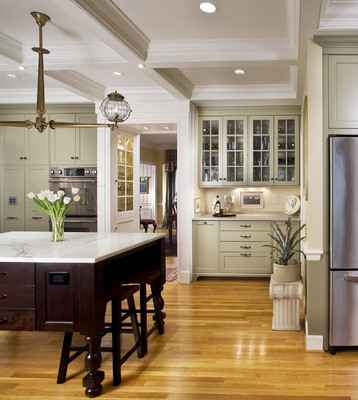- MENU
- HOME
- SEARCH
- WORLD
- MAIN
- AFRICA
- ASIA
- BALKANS
- EUROPE
- LATIN AMERICA
- MIDDLE EAST
- United Kingdom
- United States
- Argentina
- Australia
- Austria
- Benelux
- Brazil
- Canada
- China
- France
- Germany
- Greece
- Hungary
- India
- Indonesia
- Ireland
- Israel
- Italy
- Japan
- Korea
- Mexico
- New Zealand
- Pakistan
- Philippines
- Poland
- Russia
- South Africa
- Spain
- Taiwan
- Turkey
- USA
- BUSINESS
- WEALTH
- STOCKS
- TECH
- HEALTH
- LIFESTYLE
- ENTERTAINMENT
- SPORTS
- RSS
- iHaveNet.com

'Historic' and 'Eclectic' Are Not Necessarily Opposites
Mixing styles, shapes and sizes has become a fashionable way of designing an interior. But surely that technique is appropriate only in contemporary settings, right? Not necessarily.
A visit to an historic home, or at least a look through a book on traditional American and European interiors, may well upset the assumption that the only appropriate design in these circumstances is a conservative design. Our ancestors often devised eclectic looks for their homes rather than following strict formulas. That's partly because they seldom had easy access to the type of furnishings they were expected to use. They had to improvise -- and the results were never dull.
QUESTION:
We're about to renovate a 100-year-old townhouse. Most of the rooms are large, with wooden floors, doors, moldings and window frames. We want to restore all these features to their original finish -- except in the kitchen, where we plan to install new cabinets and appliances. What sort of colors would best complement the other rooms while still producing a bright and contemporary look in the kitchen?
ANSWER:
Rather than answer in the abstract, I'll use this photo to illustrate my suggestions.
This kitchen has the sort of crisp, modern design you prefer, but please note that the look is achieved with an uncovered hardwood floor as well as with wooden cabinets and moldings. These elements would readily complement the other rooms in the house you're renovating.
Let's look at each component, starting with the floor, to see how it contributes to the overall effect. The conventional stain chosen as a finish allows the floor in this model to serve as a stage on which the painted wood cabinets and other elements are arranged.
The ceiling moldings may be inconspicuous at first glance, but they contribute significantly to the kitchen's appearance. In addition to accenting the ceiling itself, the moldings complement the doorframes and other millwork. The correspondence is emphasized by the bright white paint used on each of these elements, which also makes them gibe with the marble tabletop. The white woodwork frames the entire room while contrasting pleasingly with the putty-colored cabinetry and the ebony-stained worktable. Glass fronts on the cabinetry introduce variety in material and texture. That choice in turn eliminates the need for wall covering, which helps keep the composition simple and direct -- which is a hallmark of contemporary design.
But what about that odd-looking light fixture? It doesn't go with the rest of the choices; and that's why this design can be described as eclectic. The intention here was to make a surprising statement in a space that's usually designed mainly for function rather than for looks.
AUTOS | HOBBIES | EDUCATION | FAMILY | FASHION | FOOD & RECIPES | HOME DECOR | RELATIONSHIPS | PARENTING | PETS | TRAVEL | WOMEN
© Tribune Media Services